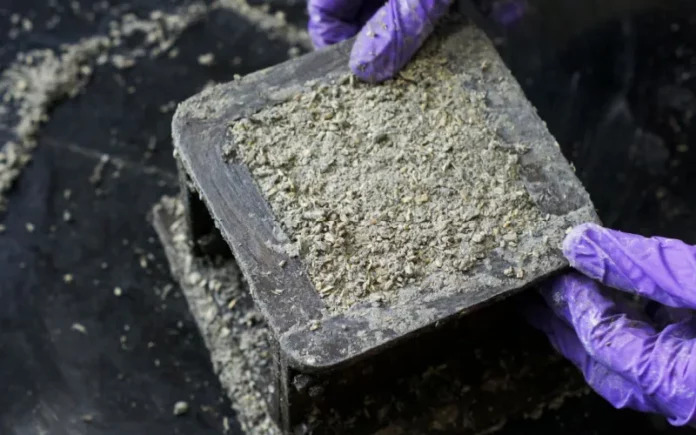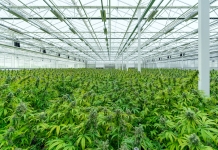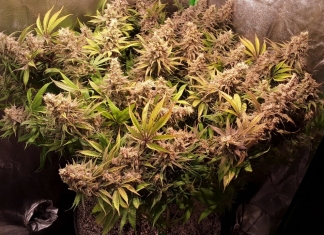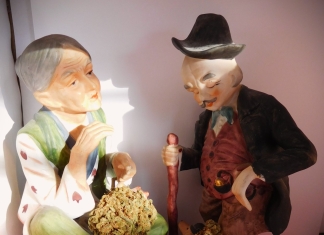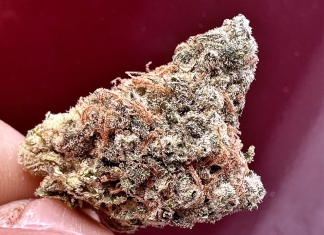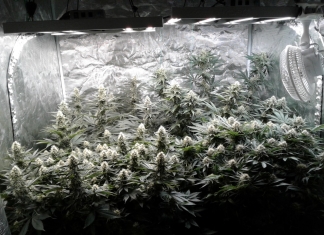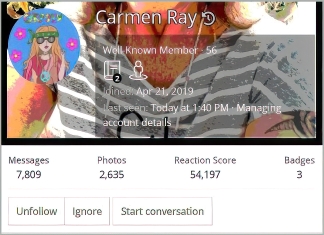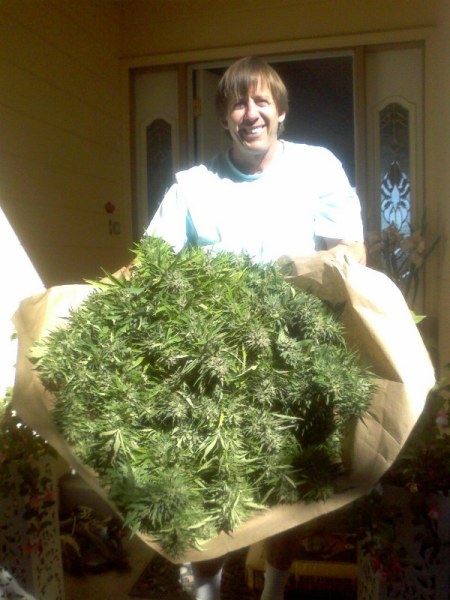The Lower Sioux Indian Community believes using hemp to build houses will help them address a housing shortage while promoting eco-friendly building practices.
Danny Desjarlais started going to construction sites at the age of 12, and has worked in the industry for nearly three decades. In all those years, one unusual house he helped build stands out as the proudest achievement of his career—a house made with the hemp plant.
The house, believed to be the first of its kind in Minnesota, sits on the Lower Sioux Indian Community reservation in Morton, Minnesota. It’s made with hempcrete, a material consisting of woody hemp stalks, limestone, and water. The house will also serve as the Lower Sioux Indian Community’s first emergency housing development.
“I’ve been on a lot of job sites and driven to a lot of job sites, and I never felt emotionally attached to a job, you know,” said Desjarlais, the hempcrete construction project manager for the Lower Sioux Indian Community. “There’s a difference for sure.”
The potential to build eco-friendly houses for community members is exciting for Desjarlais and others who helped create The Lower Sioux Hemp Program. The Lower Sioux Indian Community developed the program to address housing needs and create job opportunities.
Hempcrete is an emerging material in the United States’ construction industry, and leaders with the Lower Sioux Hemp Program say it could move home construction in a safer and more sustainable direction.
The Lower Sioux Hemp Program was formed a few years ago to address the tribe’s housing needs. The program includes farming hemp plants, manufacturing hempcrete, and constructing houses.
The Lower Sioux Indian Community is a federally-recognized tribe located in south central Minnesota. The tribe has around 1,000 enrolled members; more than half live on tribal land, according to the tribe’s website.
Larry Swann, director of the tribe’s Dakota Future lending institution, said many of the tribe’s enrolled members want to live on tribal land, but there aren’t enough houses and land is limited. According to recent federal data, there is a shortage of 200 houses on the reservation.
Swann said tribal members also face other challenges in housing, such as the rising cost of building materials and high interest rates for bank loans. Many grandparents, children, and parents want to live together on the reservation, he added, which causes overcrowding.
Obtaining a loan to buy or build a house on reservation land also comes with unique hurdles for tribal members.
Swann said the title for the reservation land is held by the U.S. government, so potential homebuyers have to apply for a special Section 184 loan to get mortgage financing. The application and approval process usually takes six months to a year before a house can be built or purchased.
In addition, the nearest banks that offer Section 148 loans are located more than two hours away from the reservation. Swann said banks are more likely to reject Section 148 loan applications because the loans are seen as more high risk.
The tribe’s first hempcrete house will be completely finished this month, and will welcome its first occupants in December.
To the naked eye, the house doesn’t look much different from other types of home builds. The side-by-side duplex is light green on the outside and one story tall. Each unit is about 1,400 square feet and has one bedroom and one bathroom.
But the 12-inch-thick walls are made of hempcrete, which looks like small wood chips stuck together when dried and finished. The material, which is filled in between traditional wood frames, is resistant to fire, mold, and pests. The hempcrete is then covered with a layer of lime plaster to serve as the interior walls of the house.
Desjarlais said his construction team used about 8,000 pounds of hemp for the house, and installed the hempcrete in three days. It normally takes about three to four months to build a house of similar size using traditional methods and materials, he added.
“I don’t want to build any other way now. I only want to build with hempcrete,” Desjarlais said.
A new building material
Hempcrete is a relatively new construction material that gained traction in the United States after the 2018 U.S. farm bill legalized commercial hemp production. Several countries, such as the United Kingdom and France, have built structures with hempcrete for many years.
Hemp plants are fast-growing herbs that can be used for industrial and medicinal purposes. The plant is from the same cannabis species as marijuana, but the main difference is that hemp has less Tetrahydrocannabinol (THC), which creates the “high” that is associated with marijuana.
Because hemp plants are similar to marijuana, some community members were skeptical about using hemp to build houses, said Earl Pendleton, vice president of the Lower Sioux Indian Community’s tribal council. Some critics were also doubtful about overcoming the challenges to establishing a hempcrete program.
“There were some funny reactions,” he said. “People thought you could smoke the house, and people thought you get high off of it, and some people were skeptical of how it will look,” he said.
Pendleton said that approximately 15 years ago he discovered an article about “25,000 uses” for the hemp plant. He said the benefits of hemp plants seemed “unbelievable” to him, so he dove deeper into learning more, which eventually led him to the idea of building houses with hempcrete.
Pendleton told critics that hempcrete is a non-toxic, plant-based material that has natural abilities to ventilate moisture, heat, and air inside a home.
“I think this is just an easy thing to sell to people—that it’s healthier, it can save you money, it’s healthier for the environment, and it’ll cut down on mold, pests and fire,” he said.
But some community members who spoke out on the effort were still skeptical, he added.
Pendleton and Desjarlais said they changed critics’ minds after building a storage shed with hempcrete.
“Everybody’s mind was blown–even mine, you know,” Desjarlais said. “I had no idea what this stuff was gonna be like, and then once you actually work with it, it’s amazing.”
The shed now sits on the community’s powwow grounds as a concession stand.
“From field to house”
Joey Goodthunder, hemp coordinator for the tribe, is in charge of farming, harvesting, and processing the hemp plants. About 80 acres of hemp are grown on tribal land and farm fields scattered across neighboring land.
“I mean, talk about being able to see where your products go, from field to house—that’s really rewarding to me,” he said.
Goodthunder said it usually takes about 90 days from planting hemp seeds to harvesting mature plants.
Preparing the hemp plants for construction is a long process. Before harvesting, the plants are tested to ensure that their THC levels meet federal guidelines; it takes about a week to receive the results. Once the plants pass the test, Goodthunder harvests them and chops them into 30-inch lengths.
The plants are left out on the field for five weeks to rot, which helps separate the fibers from the hurds, the inner woody parts of the stalks that are used in hempcrete.
The plants are then rolled into bales and brought to a processing facility, Prairie PROducers, in the nearby town of Olivia. More than a million pounds of hemp bales are stacked in the back field near a warehouse at Prairie PROducers, Desjarlais said. The duplex used 16 bales of hemp, he added.
One-by-one, the bales are placed into a BaleBuster, which separates the raw materials and funnels them into the facility’s warehouse. A line of giant machines then continue separating the materials until the hurds are extracted.
Desjarlais said he hopes new equipment will be added to the processing line to increase production. Construction has already started on a facility to store and process hemp near the tribe’s government center on tribal land, he added. The construction is expected to be completed next March.
Swann believes that the tribe’s hempcrete construction program is the first in the state, and possibly country, that controls the entire process from farming hemp to building houses. The competitive edge, he said, contributes to creating job opportunities in the community and strengthening the tribe’s economic growth.
The final part of creating hempcrete is mixing the hurds with limestone and water. Depending on the project, the team can utilize different techniques to install hempcrete, such as spraying it or installing it as pre-dried blocks into traditional wood framing for a house.
Benefits for the community
State and federal-funded housing projects have been successful in the past, and community members have worked for local building contractors, Pendleton said. But, he added, the community hasn’t had the opportunity to control solutions that addressed the tribe’s housing needs. The hempcrete construction program, he said, is the answer to that.
“Now, we control the process more where we have our own contracting entity that can bid on our grant-funded projects,” Pendleton said. “There’s no other contractors in the area who can offer natural building materials that are better for the health of the people and the homeowners’ pocketbook.”
He added that the tribe’s hempcrete will be used to repair and retrofit old homes in the community as well. The construction team employs six paid workers from the community.
The team began construction on Monday to build the second hempcrete house on tribal land, a four-bedroom, single-family house.
Desjarlais traveled to Canada last October to teach a tribe about the hempcrete construction industry and share his experiences. He hopes to continue sharing more of his knowledge.
“This is just scraping the surface. We have all the potential in the world to rebuild this entire community out of hempcrete, not only in new structures, but retrofit any existing structures that may have been poorly built or built with cheap materials,” he said. “Over the next five years, that’s what we plan on doing, is building as much hempcrete as we can, and getting some nice healthy homes for our community members to live in.


